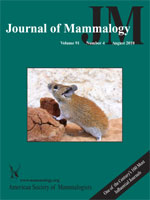Protein is essential for growth and reproduction. We used nitrogen stable isotope analysis to reconstruct protein (i.e., nitrogen) dietary origin in 2 Antillean nectarivorous bats with contrasting morphology of the masticatory apparatus: the Greater Antillean long-tongued bat (Monophyllus redmani, Glossophaginae) and Poey's flower bat (Phyllonycteris poeyi, Phyllonycterinae). M. redmani has a masticatory apparatus that is more adapted to feed on flowers, whereas P. poeyi has a feeding structure that resembles the structure of frugivorous bats. M. redmani relied on a mixture of nitrogen derived from insects and plants, and P. poeyi depended more on plant nitrogen. Based on previous findings in fecal contents, we concluded that M. redmani obtained plant nitrogen mainly from pollen, and P. poeyi obtained it predominantly from fruits. Our study suggests that jaw morphology plays a major role in dietary diversification among nectarivorous bats to obtain protein.
How to translate text using browser tools
16 August 2010
Disparate feeding strategies used by syntopic Antillean nectarivorous bats to obtain dietary protein
Carlos A. Mancina,
L. Gerardo M. Herrera
ACCESS THE FULL ARTICLE

Journal of Mammalogy
Vol. 91 • No. 4
August 2010
Vol. 91 • No. 4
August 2010




